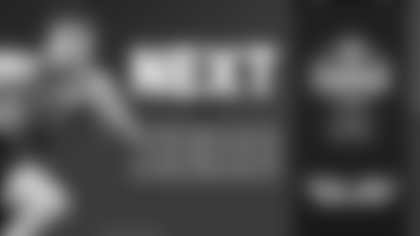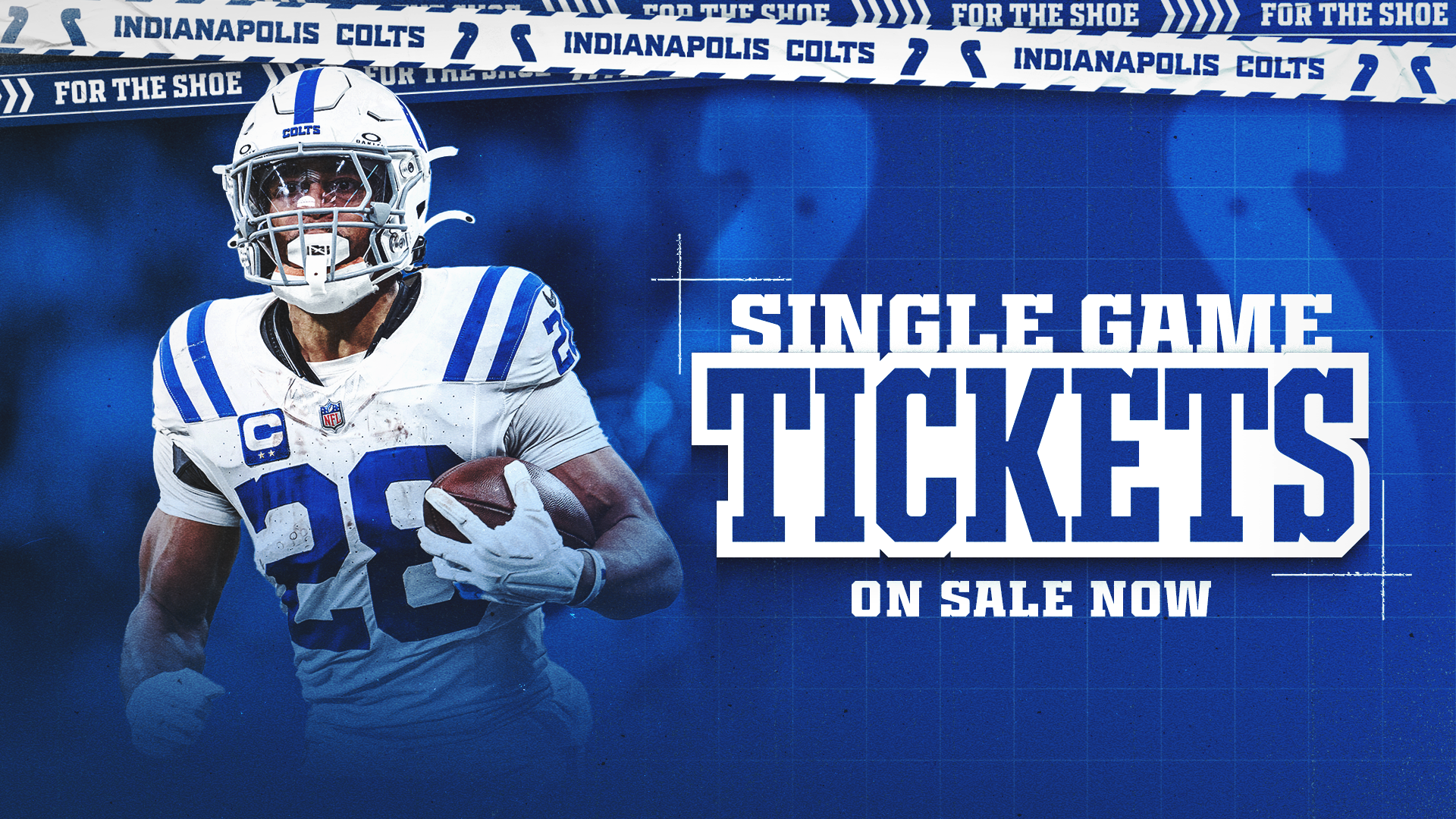INDIANAPOLIS — The 2020 NFL Scouting Combine concluded over the weekend as 337 participants met with and put their skills on display for the 32 teams in attendance.
Being invited to the Combine is a good indicator of your draftability, but just because you didn't make it to the Combine does not mean the end of your NFL road. In fact, a lot of those players are still drafted every year, and even if they go undrafted, many still make an impact.
This year, there were some very talented 2020 NFL Draft hopefuls who were not in attendance at the Combine, but stand a decent chance at making an impact at the next level.
Here are some of the most notable 2020 NFL Scouting Combine omissions.
ED Oluwole Betiku Jr., Ilinois
Betiku Jr. is a very interesting prospect. He moved to California from Nigeria as a sophomore in high school, where he eventually earned five-star prospect status on his was to USC in 2016. He barely touched the field in his first two seasons and then was forced to sit out all of 2018 following hip surgery. He then transferred to the University of Illinois as a graduate transfer in 2019 and blew up, collecting 36 tackles (13.0 for loss), 9.0 sacks and two fumble recoveries in 10 games. He's a very raw player, being so new to football in high school and then only playing in 24 games in college, but he's got a ton of upside. If he can prove to an NFL club that he can stay healthy and they give him time to develop, they could reap the rewards of his talents.
IOL Kevin Dotson, UL-Lafayette
Perhaps my favorite player on this list, I'm really not sure why he wasn't invited to the Combine. The level of competition at UL-Lafayette isn't primo, sure, but he showed signs of dominance at that level, and if he played in the SEC then he'd probably be no worse than a Day 2 lock. In fact, he was named a First-Team All-American. He's a four-year starter at right guard with room for development, but has great tools to work with. At 6-4, 310, he has an athletic build, is both strong and moves his frame very well. He has a nasty streak and wants to maul defenders. He's truly one of the small-school gems in this class.
IDL Breiden Fehoko, LSU
There's room to grow in Fehoko's game, as he is currently mostly a one-trick pony as a run stopper along the defensive line. He transferred from Texas Tech to LSU, where he started 12-of-23 games over the last two seasons. In that time, he amassed 33 tackles (9.0 for loss), 2.0 sacks and two pass breakups. He has the frame (6-2, 291) and experience to play in several spots along the line, kicking outside on run downs and inside on passing downs. If he can develop better technique in hand combat with blockers, and more setup and counter moves then he could be an enticing option as an interior defender for teams with a four-man front.
ED Bryce Huff, Memphis
Whether teams think he's a linebacker or an edge prospect, Huff's got some skills. At nearly 6-2 and around 250 pounds, he's got an adequate frame for either spot, but he's got the speed and athleticism to be a weak side pass rusher. He's a tenacious defender who is determined in pursuit. He uses his hands well when setting up blockers, and he has a blend of both power and bend that makes him an affective pass rusher. He needs to become a little more patient, however, as he often overshoots his target in the backfield, or the running back makes him miss by being a little overzealous.
QB Tyler Huntley, Utah
When he gives himself time, Huntley throws the ball with nice timing and anticipation. When he gets rattled or is under too much pressure, his accuracy dwindles. One of the most decorated quarterbacks in Utah school history, Huntley has good arm strength and throws a pretty deep ball. Huntley is athletic, can buy time and pick up extra yards with his legs, but he can also throw from odd arm angles and contort his body to get the ball out, similar to how Patrick Mahomes and Lamar Jackson can (no, not at their level). By adding a little bulk and developing under some NFL coaching, the reigning First-Team All-Pac 12 member could be a dangerous backup quarterback.
TE Joey Magnifico, Memphis
One of the best names in this draft, Magnifico has quite a bit of talent as a do-it-all tight end. He's a little undersized, but he gives a ton of effort as a blocker and a pass-catcher. Memphis lined him up pretty much everywhere; inline, behind the line, split out wide and in the slot. On top of it all, he's got great hands.
IDL Bravvion Roy, Baylor
Roy looks and plays the part of your classic 3-4 nose tackle. He's 6-1, 332 pounds, but he can get out and move as well, showing a little better movement skills and athleticism than you'd think for a guy that size. He's sturdy with a good anchor, and frequently takes on multiple blockers. When facing single blockers, however, he could develop more counter moves to get himself freed up.
IOL Zach Shackelford, Texas
Experienced, veteran center prospects are ones to be valued, as Shackelford started 39-of-42 games at Texas. He's an aggressive blocker who thrives on driving defenders back, and he's always looking for work, routinely going for multiple defenders in a play. He doesn't have much lateral agility, however, and is more of a "phone booth" blocker. Better technique could help him against quicker interior defensive linemen.
S Levonta Taylor, Florida State
Versatility is key in the NFL, and that's what Taylor brings to the table. He has extensive experience at outside cornerback, slot defender and safety. The biggest issue is his size, as he's 5'8, 176 pounds, and he doesn't have the arm length to make up for his lack of height. He is quick, though and can flip his hips fluidly. He's aggressive given his size, not afraid to make tackles despite his lack of size. Smaller guys have succeeded before in the NFL. We'll see if it could be on special teams or on defense for Taylor.
WR Isaiah Wright, Temple
Wright is both a receiver and return specialist, bringing adequate ability to both slots. In 50 games at Temple, he caught 134 balls for 1,552 yards (11.6 avg.) and 12 touchdowns while also carrying the ball 91 times for 552 yards (6.1 avg.) and three touchdowns. As a returner, he has 84 kickoff returns for 2,029 yards (24.2 avg.) and two touchdowns as well as 43 punt returns for 444 yards (10.3 avg.) and three touchdowns. He's a big-bodied player at 6-1, 216, has plenty of speed, as evidenced by the multitude of ways he's used, and used successfully. His big issue is inconsistent hands, as he often drops passes he shouldn't.
While not being able to put your skills on display at the Combine certainly is not helpful for a player's draft stock in the short term, what happens in their career is still very much up to them, as proven by this note last year from "The Godfather of Scouting," Gil Brandt:
Last year's crop of NFL rookies had plenty of guys make an impact who weren't at the Combine, most notably New Orleans Saints wide receiver/kick returner Deonte Harris, who was named First-Team All-Pro as a returner, as well as a Pro Bowler. Other non-Combine rookie who made a big impact on their teams included Baltimore Ravens interior offensive lineman Patrick Mekari, Denver Broncos edge defender Malik Reed, Kansas City Chiefs running back Darwin Thompson, Saints interior defensive lineman Shy Tuttle and Miami Dolphins wide receiver Preston Williams.
















